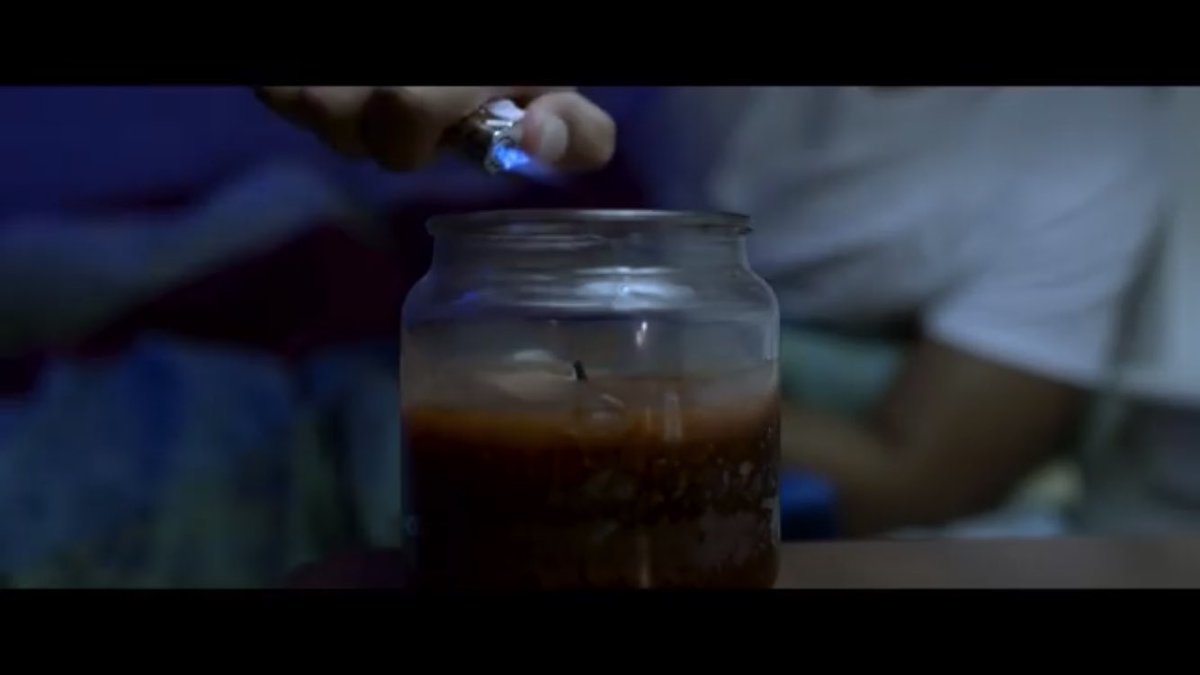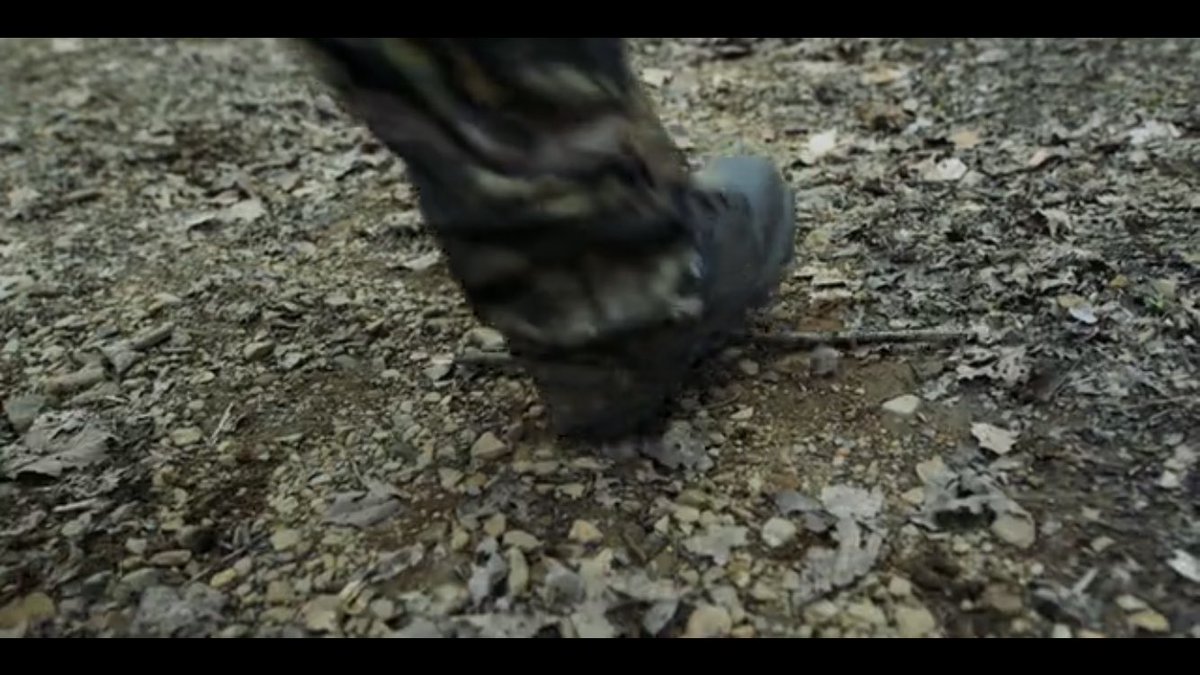You asked for it! The following is a thread about scene transitions in screenwriting.
One thing I find interesting about writers is that the more they write, the more they are able to express themselves in the smallest details of a scene. But one small detail seems to slip through the cracks a lot. One that, if done right, can REALLY set you apart from your peers.
I’m talking about transitions. That’s right. Transitions. And to answer your question: No. I don’t mean CUT TO or FADE TO.
So what do I mean? Well... the following are what I believe to be the two biggest types of transitions I use in my own writing.
Visual, and sound.
So what do I mean? Well... the following are what I believe to be the two biggest types of transitions I use in my own writing.
Visual, and sound.
I’ll start simple. To me, transitions are ESSENTIAL story telling devices.
So Let me introduce you to the MATCH CUT. A favorite of mine. And so god damn versatile it almost feels like a cheat code when I see it done well. Usually done by going from one object to another.
So Let me introduce you to the MATCH CUT. A favorite of mine. And so god damn versatile it almost feels like a cheat code when I see it done well. Usually done by going from one object to another.
A great way to use a match cut is to show a passage of time. Take this frame for example. A character going to light a candle. Simple right? Well, this scene takes place during the day. The next scene had to take place at night. How do I get there from this??
BOOM. Our actor clicks the lighter and takes us into our next scene. An easy way to show that time has passed, without needing spend time telling us time has passed. Film is a visual medium. As a screenwriting, it’s your duty to maximize that medium to the best of your abilities.
Another great example of passing time with a match cut comes from HOT FUZZ from one of my favorite directors @edgarwright just look at these two shots and how much info you get just from two glorious frames. And guess what? This is in the script.
But how do you write a transition into a script like this? Well, let’s take a look at the script for HOT FUZZ:
See this? Simple. Easy. Visual as hell.
If you need to show passage of time and add some life into your script, this is a great way to do it.
See this? Simple. Easy. Visual as hell.
If you need to show passage of time and add some life into your script, this is a great way to do it.
But the object to object match cut can do SO MUCH more than just pass time in the world of your story. It can also be thematic.
Your characters have a drinking problem. How do you show that? Well, I present to you, more glorious Edgar Wright match cuts.
Your characters have a drinking problem. How do you show that? Well, I present to you, more glorious Edgar Wright match cuts.
But transitions are SO MUCH more than just simple match cuts. One of my all time favorite examples of using transitions as a part of your story and building tension, is from LOTR. Specifically, when Faramir returns to Minas Tirith in RETURN OF THE KING.
Faramir is riding into a doomed battle at the command of his father Denethor. But instead of showing us a huge battle, they decide to juxtapose Denethor eating a nice meal while Faramir rides into battle. Take this shot for example as we ride with Faramir into certain death:
Majestic AF right? But they do t show you the full battle. They don’t need to. Why? Because of the genius of the transitions in this scene. They IMPLY what happens. In the VERY NEXT frame, Denethor SNAPS a chicken bone. What do you THINK will happen on the battle field?
But the brilliance continues. The Orcs show their strength. And the screenwriters show us just how our numbered our hero’s are. They are toast. And Denethor knows it. But he doesn’t care. How can we show this army will be slaughtered without ACTUALLY showing us?
This is the VERY next frame. What do you think happened on the battle field? They don’t need to show you because with this creative transition, they are implying what happened, while ALSO leaving themselves open to pull the rug out from under you later on.
And guess what... THEY DO! Faramir lives!! But if you stopped watching here, you never would have guessed. THIS is a great way to use transitions as a storytelling element. Make people think one thing, then either deliver on that promise by showin a body later, or give us a twist
How would something like this look in script format? Well, let me show you the script for my short film #BloodSugar which was fully funded and slated for production this summer until the world basically ended. Take a look:
In this sequence, my protagonist is running from a zombie she just killed. But once she exits the house, she comes face to face with a whole horde of zombies. But this is a short film and we don’t have the budget to show her get attacked. So...
Look familiar? It should, and it’s no accident.
Next up is SOUND. Another favorite of mine is using a bit of dialog as a bridge to the next scene. Take this example from my feature script #BloodSugar where three meth head sisters are searching for a doctor:
Next up is SOUND. Another favorite of mine is using a bit of dialog as a bridge to the next scene. Take this example from my feature script #BloodSugar where three meth head sisters are searching for a doctor:
I struggled for a long time trying to get from that scene to Sarah giving her daughter stitches. The scene with the sisters kept running long, and I had no idea how or when to get out of that scene. So I tried to look ahead. What was my next scene? Stitching. Needles. There we go
Transitions are a GREAT way to get out of a scene early. But they’re also a great way to juxtapose characters of contrasting styles in your script. Again, let’s take a look at this scene from #BloodSugar where we cut back and forth between two timelines that are about to clash:
Something like this is a great way to keep your reader entertained, use the medium to its fullest visual potential, and to show differences between characters that will be the source of more conflict after they come together. I also bet this will help set you apart from others.
Lastly, is using sound as a way to transition from one scene to another. In my most recent film THE HUNTED, I wanted to cut from a moment of levity to my main character who is pissed TF off. A big shift in tone. I wondered how I could soften the blow of such a shift in tone. So..
In this 1st frame, we see a character eating chips. In the second, our main character steps on a twig. But the break of the twig sounds like the crunch of a potato chip. A small subconscious connection between scenes to ease the shift in tone.
Anyway, I could go on about this forever, as I am SURE there is plenty I missed here. If you’d like to add to this thread, please do! By no means am I an expert, but after directing 13 short films, you learn a thing or two I suppose  https://abs.twimg.com/emoji/v2/... draggable="false" alt="🤷🏻♂️" title="Man shrugging (light skin tone)" aria-label="Emoji: Man shrugging (light skin tone)">
https://abs.twimg.com/emoji/v2/... draggable="false" alt="🤷🏻♂️" title="Man shrugging (light skin tone)" aria-label="Emoji: Man shrugging (light skin tone)">
Thank you all for following along! I truly hope this helps some of you. Don’t be afraid to write transitions into your script, but at the same time, don’t force it. Trust me, others will be able to tell if you do. Keep transitions in mind when you write, and HAVE FUN ON THE PAGE!

 Read on Twitter
Read on Twitter

















